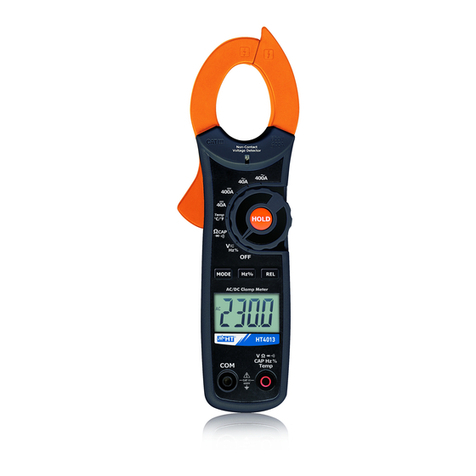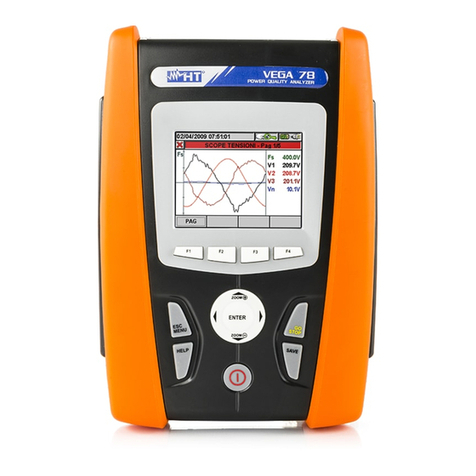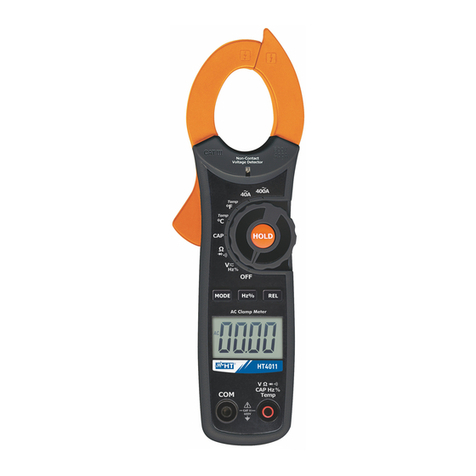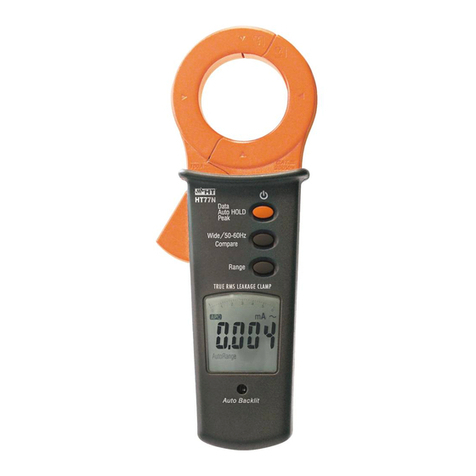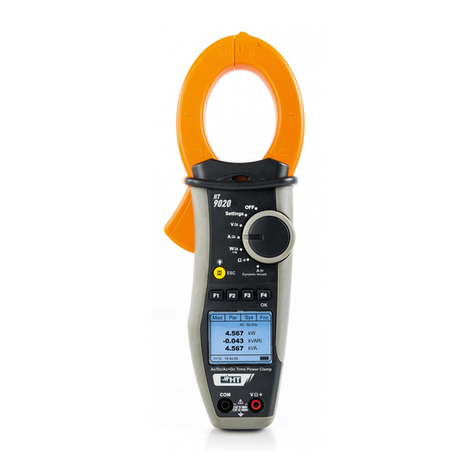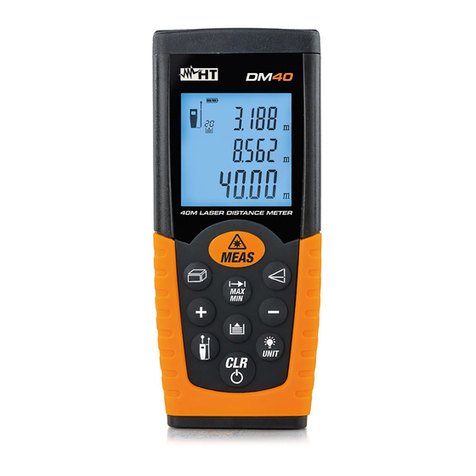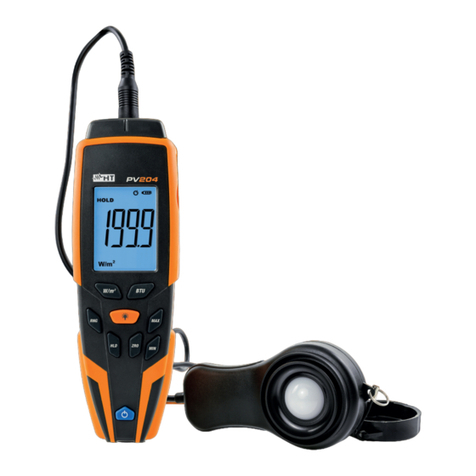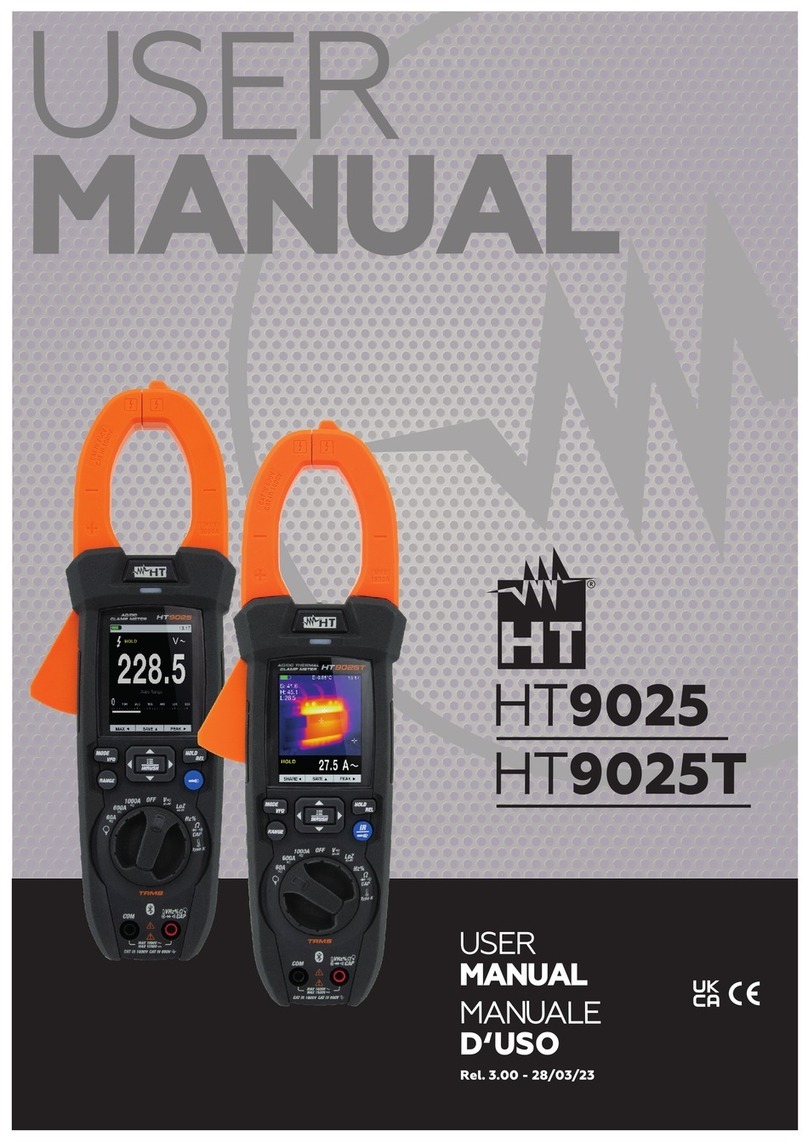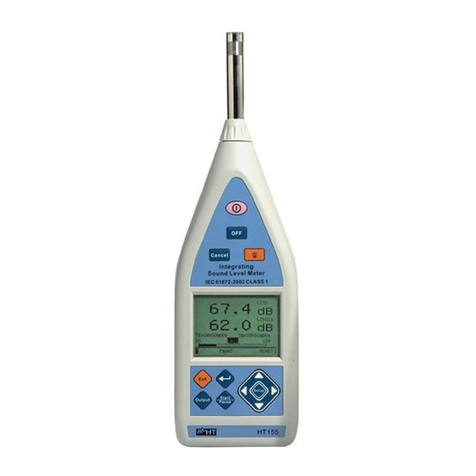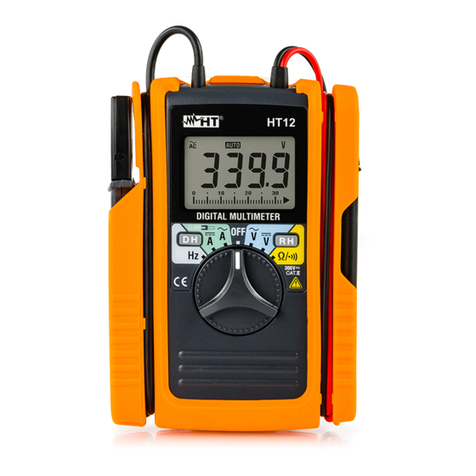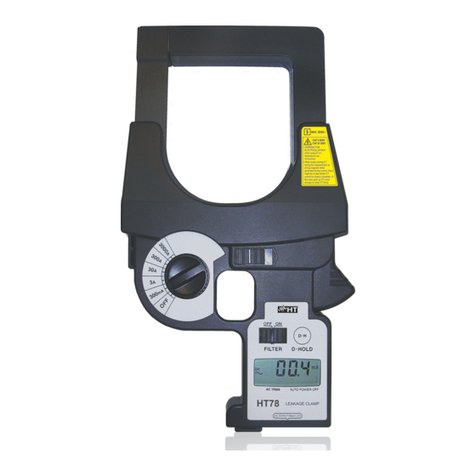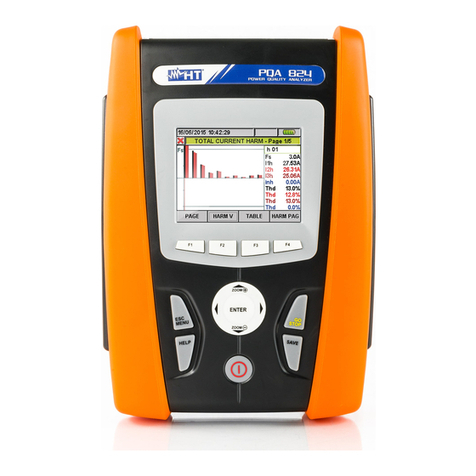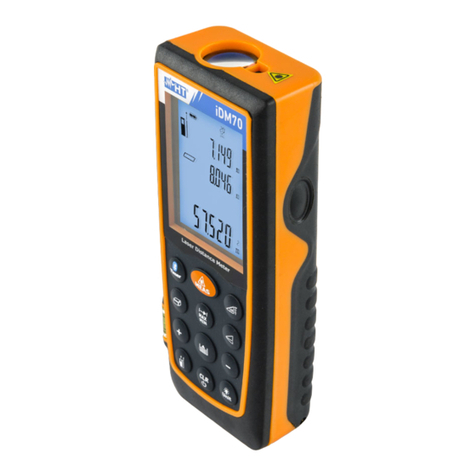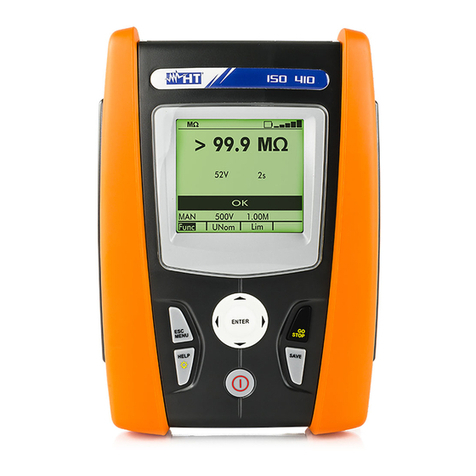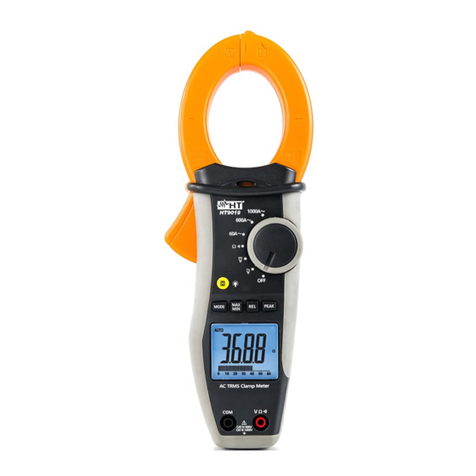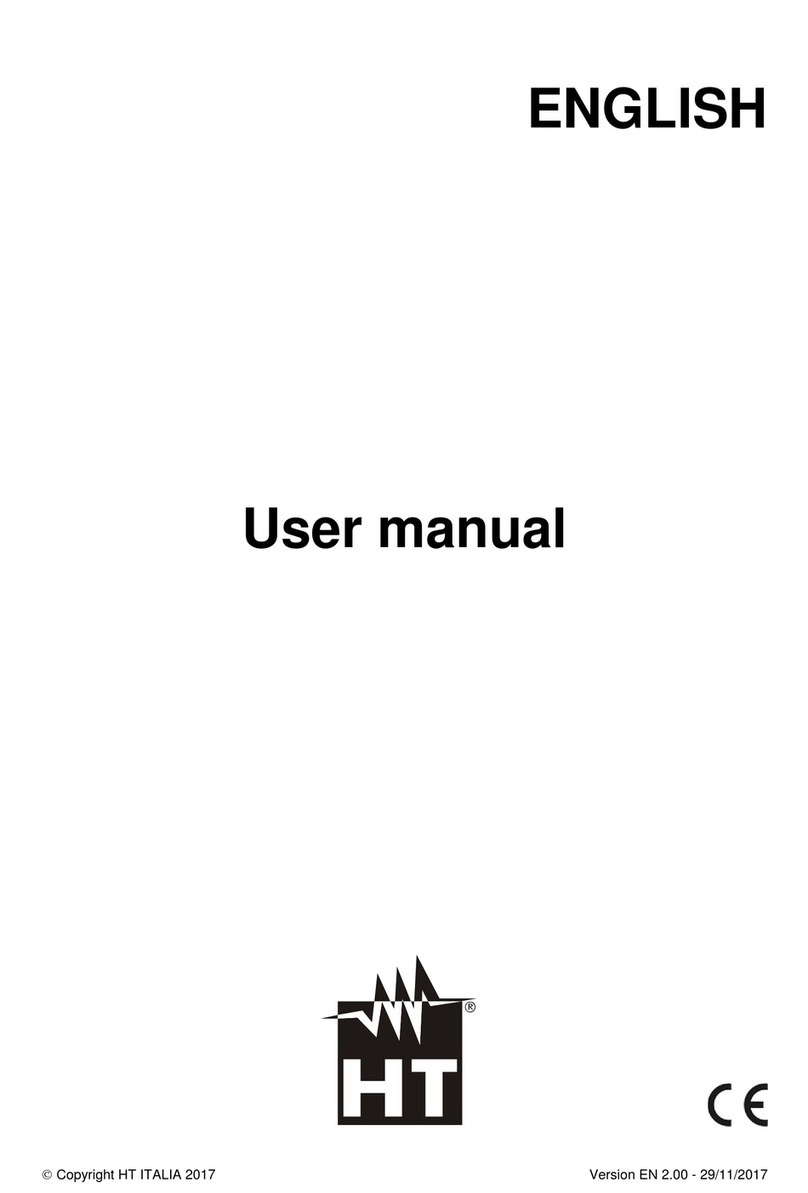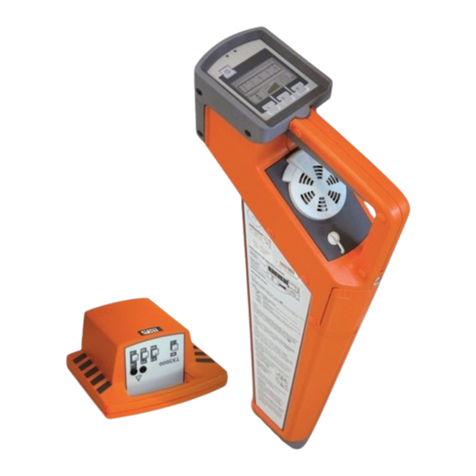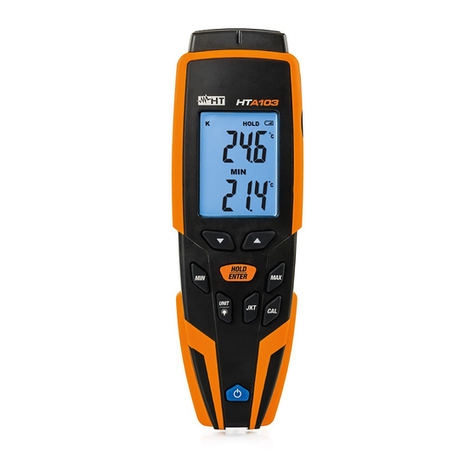
HT7051 - HT7051N
EN - 1
TABLE OF CONTENTS
1PRECAUTIONS AND SAFETY MEASURES ..................................................................2
1.1Preliminary instructions......................................................................................................... 2
1.2During use............................................................................................................................. 3
1.3After use................................................................................................................................ 3
1.4Definition of measurement (overvoltage) category ............................................................... 3
2GENERAL DESCRIPTION..............................................................................................4
2.1Instrument features ............................................................................................................... 4
3PREPARATION FOR USE..............................................................................................4
3.1Initial inspections................................................................................................................... 4
3.2Power supply ........................................................................................................................ 4
3.3Storage ................................................................................................................................. 4
4NOMENCLATURE ..........................................................................................................5
4.1Instrument description........................................................................................................... 5
4.2Description of function keys .................................................................................................. 5
4.3Description of display............................................................................................................ 6
4.4Description of measuring leads............................................................................................. 7
4.5GUARD lead ......................................................................................................................... 7
4.6Notes on the insulation measurements................................................................................. 7
5OPERATING INSTRUCTIONS........................................................................................8
5.1Switch on the instrument....................................................................................................... 8
5.1.1Auto Power OFF ........................................................................................................................ 8
5.2Insulation measurement in FIX mode ................................................................................... 9
5.2.1Configuration of the test parameters for FIX mode.................................................................. 12
5.3Insulation measurement in ADJUST mode......................................................................... 13
5.3.1Configuration of the test parameters for ADJUST mode ......................................................... 16
5.4Insulation measurement in RAMP mode ............................................................................ 17
5.4.1Configuration of the test parameters for RAMP#1 mode......................................................... 21
5.4.2Configuration of the test parameters for RAMP#2 mode......................................................... 21
5.4.3Configuration of the test parameters for RAMP#3 mode......................................................... 22
5.5Enable/Disable of SMOOTH function ................................................................................. 22
5.6Anomalous situations.......................................................................................................... 22
6MANAGEMENT OF MEMORY DATA ...........................................................................25
6.1Save measurements ........................................................................................................... 25
6.2Delete measurements......................................................................................................... 25
6.3Recall measurements ......................................................................................................... 26
7RESET OF INSTRUMENT ............................................................................................26
8CONNECTION OF THE INSTRUMENT TO PC ............................................................26
9MAINTENANCE ............................................................................................................27
9.1General information ............................................................................................................ 27
9.2Recharging internal battery................................................................................................. 27
9.3Cleaning the instrument ...................................................................................................... 27
9.4End of life ............................................................................................................................ 27
10TECHNICAL SPECIFICATIONS ...................................................................................28
10.1Reference guidelines .......................................................................................................... 29
10.2General characteristics ....................................................................................................... 29
10.3Environment........................................................................................................................ 30
10.3.1Environmental conditions for use............................................................................................. 30
10.4Accessories......................................................................................................................... 30
11SERVICE.......................................................................................................................31
11.1Warranty conditions ............................................................................................................ 31
11.2Service ................................................................................................................................ 31
12THEORETICAL APPENDIX ..........................................................................................32
12.1Polarization Index (PI)......................................................................................................... 32
12.2Dielectric Absorbtion Ratio (DAR)....................................................................................... 32












